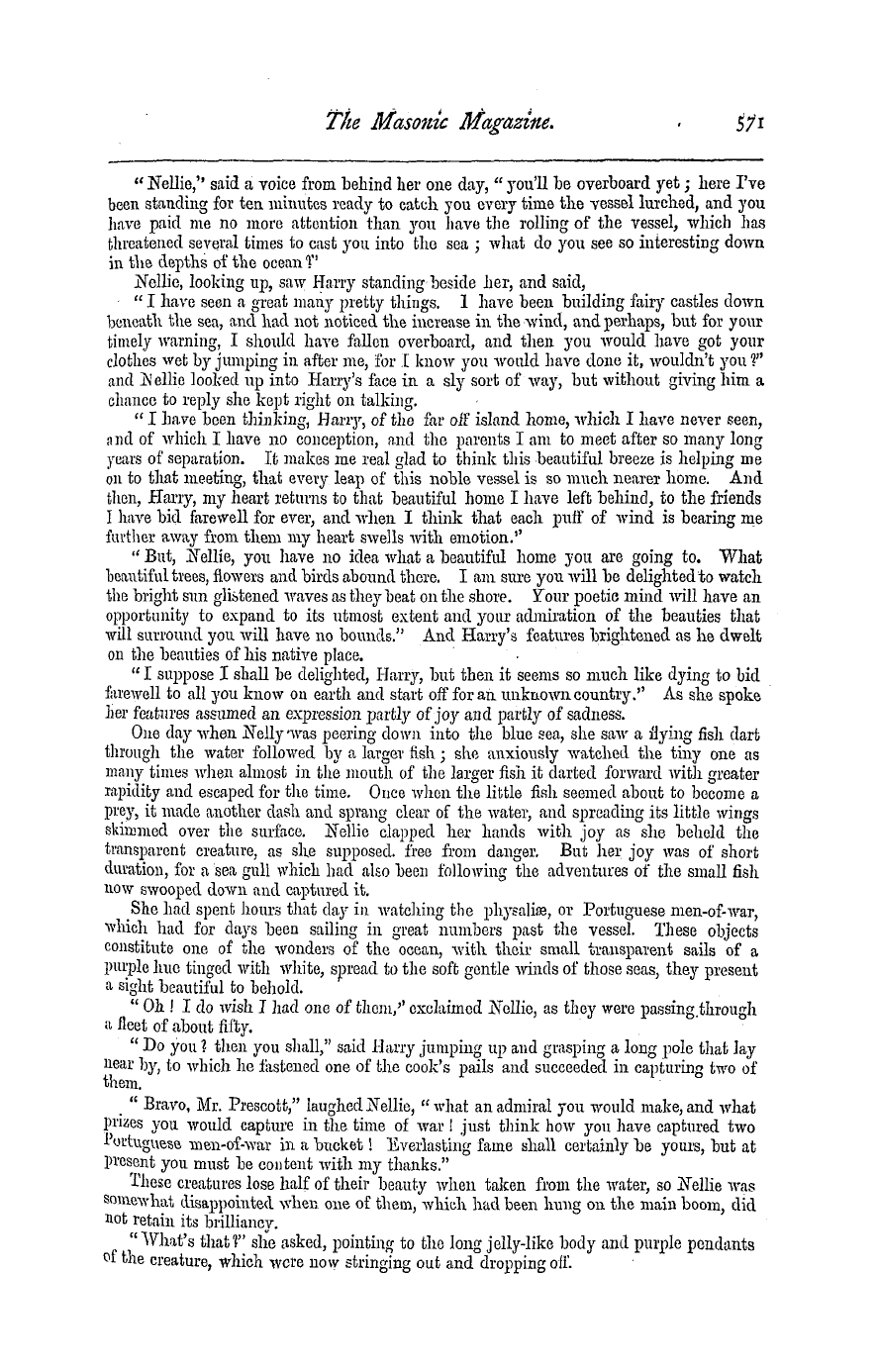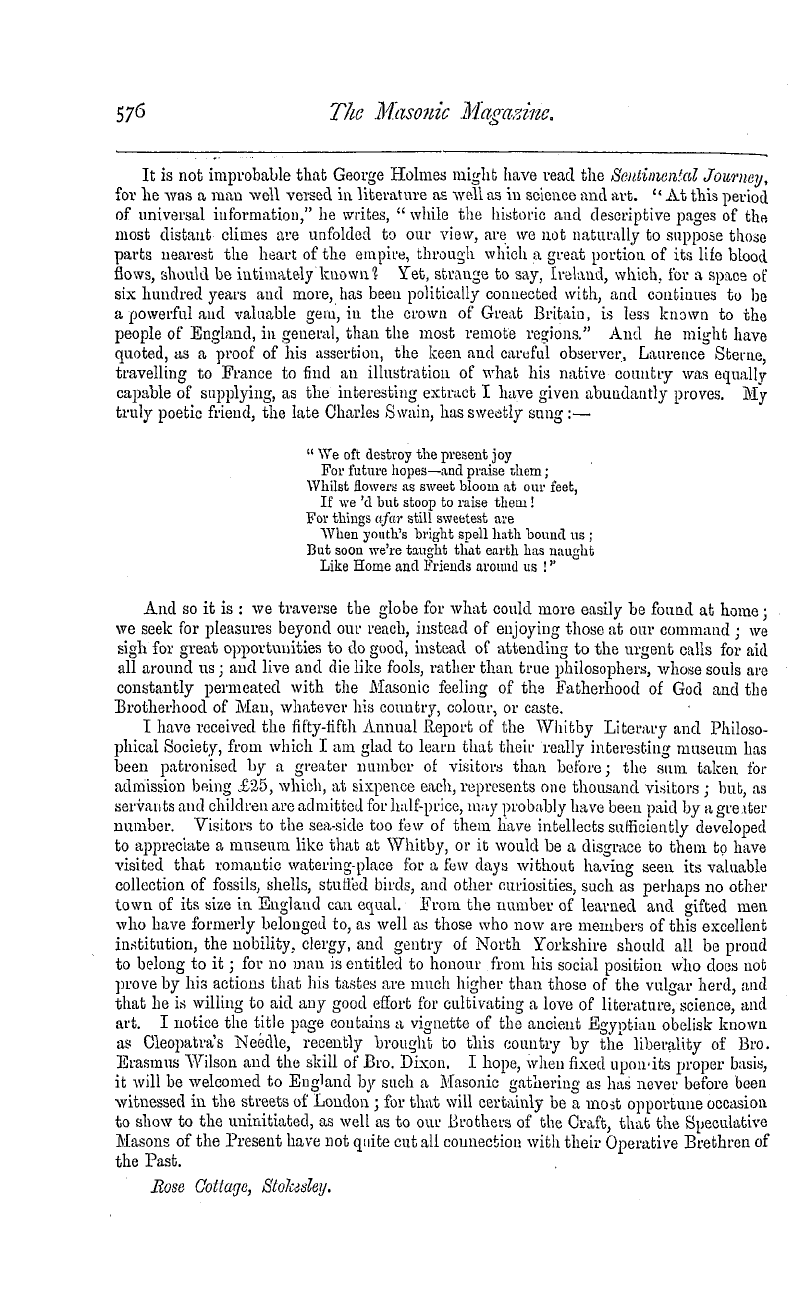Note: This text has been automatically extracted via Optical Character Recognition (OCR) software.
Discovery Of Roman Remains At Templeborough.
coal , some portions of ivhich were brought up to the surface and burned . So far the excavation of the well has proved less interesting than mi ght have been antici pated but until the bottom is reached conclusions are premature . ' Our next ivork Avas to cut a trench across the south-west angle of the a <™ er but there no foundations were found . Fragments of pottery , both Samian , black , and licit coloured , were thrown out , and 4 ft . 6 in . below the surface a band of boulders Avas cut throughwhich probabl formed road surfaceSamian
, y once a . ware and other potterv were found below these boulders at a depth of 6 feet from the crown of the agger . A depression about the middle of the south bank seemed to indicate the pface where the entrance to the station had been . At the commencement of the second week operations were begun on that spot , and eighteen inches below the surface a very rou « h boulder-pitched road was found . Its width was not very clearly defined , owing to the disturbance its surface had undergone , but it seemed to have measured about , 91 ft
, across . Trial holes were then made at intervals in a straight line across the camp to the north agger , and the road surface was found to continue the whole way . Our next effort was to ascertain what buildings had been situated on the line of the road and the inquiry ivas soon successful . About 18 in . below the surface a wall of roughlysquared stones was discovered , which proved to be three feet broad and from three to five courses in depth . The stones are laid in clay and earth , similar to the walls found at Slackand rest foundation of boulders
, on a and clay concreted together . The work of following out and uncovering the building thus discovered has since formed the chief business of the exploration . Its outline is depicted on the ground plan now exhibited At first it seemed to be a nearly square building , measuring 72 feet from north to south ' and 68 from east to west ; but , trenching the ground further eastward , we came upon another wall eight feet from that first regarded as the eastern boundaryIts
. masonry was similar m character to the other walls . In the intervening space were found many traces of fire m the form of blackened stones ancl charcoal . Two feet six inches below the surface the pierced black dish and the two whetstones now exhibited were found ; and three feet below the surface the li ght-coloured earthenware mortarium It lay face downivards , slightly inclining to the south-east , and was lifted out entire . It
measures 13 } inches across the top , and stands 3- ] - inches high , and is a very fine and quite perfect specimen of this not uncommon form of dish . On examining the newly-found easternmost wall , it was observed to rest not on concrete like the others , but on large slabs of stone ; and pushing the inquiry a little further we found that 14 inches of walling had been built over the large stones of a threshold , thus concealing the bases of two columns 11 feet apart . The clue thus obtained ivas at followedand of
once , a row seven column bases ivas disclosed buried under the walling . The level of the latter wall agreed pretty nearly with the level of the road previously referred to ; but the removal of this stonework led to the discovery of another road surface 18 inches below the first , pitched with boulders , but less disturbed than the upper one . The interval between the two roads was filled with loose stones from a ruined building , fragments of pottery , tiles , and charcoal . At the southern end of the colonnade stood a small , shallow stone trough , measuring 2 ft . Jwin . x 1 ft . om . aud 4 m . deep inside . The threshold » . t this «« , - +. «» = ™ , „ . i ,
„ , worn , as with the tread of men , and indeed all along the eastern colonnade these evidences of its having been a place of much popular resort are seen . Between the two southerly column bases , with its upper part lying over nine inches below the surface , lay a broken column five feet ten inches long , and measuring five feet two inches in circumference . The part nearest the surface was scored with many marks of the ploughshare , yet it had lam undisturbed , ivith its broken end dipping at a sharp angle into the ground that it nearlrested the
, so y on lower roadway . A luis hole remains in the end that is perfect . The column bases alread y found had carried pillars only thirteen inches in diameter , but here was one twenty inches in diameter . We had clearly other and larger bases to discover . By this time our trench had been driven well into the heart of the south agger . At this point the upper road lay three feet ' six inches above the lower road , and the
Note: This text has been automatically extracted via Optical Character Recognition (OCR) software.
Discovery Of Roman Remains At Templeborough.
coal , some portions of ivhich were brought up to the surface and burned . So far the excavation of the well has proved less interesting than mi ght have been antici pated but until the bottom is reached conclusions are premature . ' Our next ivork Avas to cut a trench across the south-west angle of the a <™ er but there no foundations were found . Fragments of pottery , both Samian , black , and licit coloured , were thrown out , and 4 ft . 6 in . below the surface a band of boulders Avas cut throughwhich probabl formed road surfaceSamian
, y once a . ware and other potterv were found below these boulders at a depth of 6 feet from the crown of the agger . A depression about the middle of the south bank seemed to indicate the pface where the entrance to the station had been . At the commencement of the second week operations were begun on that spot , and eighteen inches below the surface a very rou « h boulder-pitched road was found . Its width was not very clearly defined , owing to the disturbance its surface had undergone , but it seemed to have measured about , 91 ft
, across . Trial holes were then made at intervals in a straight line across the camp to the north agger , and the road surface was found to continue the whole way . Our next effort was to ascertain what buildings had been situated on the line of the road and the inquiry ivas soon successful . About 18 in . below the surface a wall of roughlysquared stones was discovered , which proved to be three feet broad and from three to five courses in depth . The stones are laid in clay and earth , similar to the walls found at Slackand rest foundation of boulders
, on a and clay concreted together . The work of following out and uncovering the building thus discovered has since formed the chief business of the exploration . Its outline is depicted on the ground plan now exhibited At first it seemed to be a nearly square building , measuring 72 feet from north to south ' and 68 from east to west ; but , trenching the ground further eastward , we came upon another wall eight feet from that first regarded as the eastern boundaryIts
. masonry was similar m character to the other walls . In the intervening space were found many traces of fire m the form of blackened stones ancl charcoal . Two feet six inches below the surface the pierced black dish and the two whetstones now exhibited were found ; and three feet below the surface the li ght-coloured earthenware mortarium It lay face downivards , slightly inclining to the south-east , and was lifted out entire . It
measures 13 } inches across the top , and stands 3- ] - inches high , and is a very fine and quite perfect specimen of this not uncommon form of dish . On examining the newly-found easternmost wall , it was observed to rest not on concrete like the others , but on large slabs of stone ; and pushing the inquiry a little further we found that 14 inches of walling had been built over the large stones of a threshold , thus concealing the bases of two columns 11 feet apart . The clue thus obtained ivas at followedand of
once , a row seven column bases ivas disclosed buried under the walling . The level of the latter wall agreed pretty nearly with the level of the road previously referred to ; but the removal of this stonework led to the discovery of another road surface 18 inches below the first , pitched with boulders , but less disturbed than the upper one . The interval between the two roads was filled with loose stones from a ruined building , fragments of pottery , tiles , and charcoal . At the southern end of the colonnade stood a small , shallow stone trough , measuring 2 ft . Jwin . x 1 ft . om . aud 4 m . deep inside . The threshold » . t this «« , - +. «» = ™ , „ . i ,
„ , worn , as with the tread of men , and indeed all along the eastern colonnade these evidences of its having been a place of much popular resort are seen . Between the two southerly column bases , with its upper part lying over nine inches below the surface , lay a broken column five feet ten inches long , and measuring five feet two inches in circumference . The part nearest the surface was scored with many marks of the ploughshare , yet it had lam undisturbed , ivith its broken end dipping at a sharp angle into the ground that it nearlrested the
, so y on lower roadway . A luis hole remains in the end that is perfect . The column bases alread y found had carried pillars only thirteen inches in diameter , but here was one twenty inches in diameter . We had clearly other and larger bases to discover . By this time our trench had been driven well into the heart of the south agger . At this point the upper road lay three feet ' six inches above the lower road , and the















































